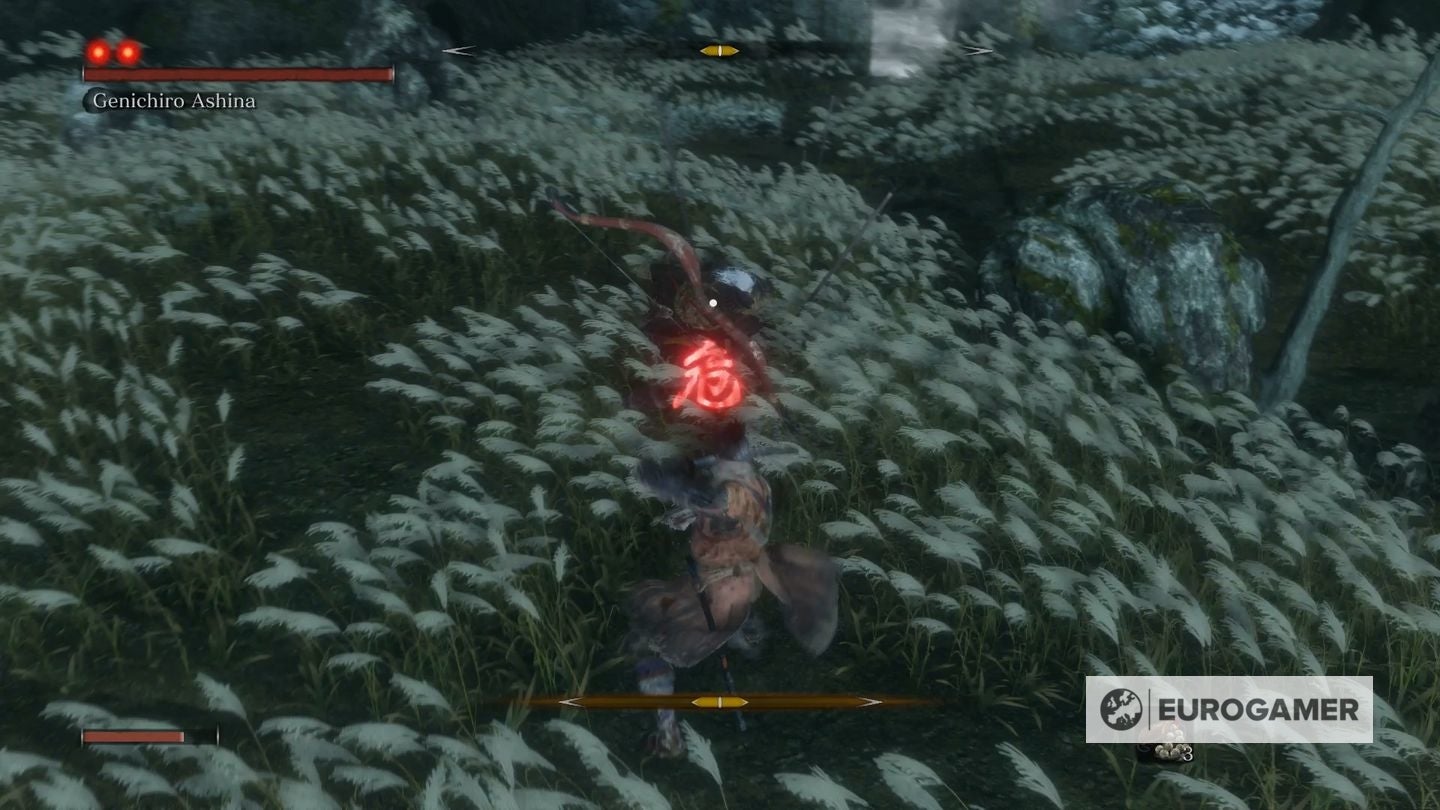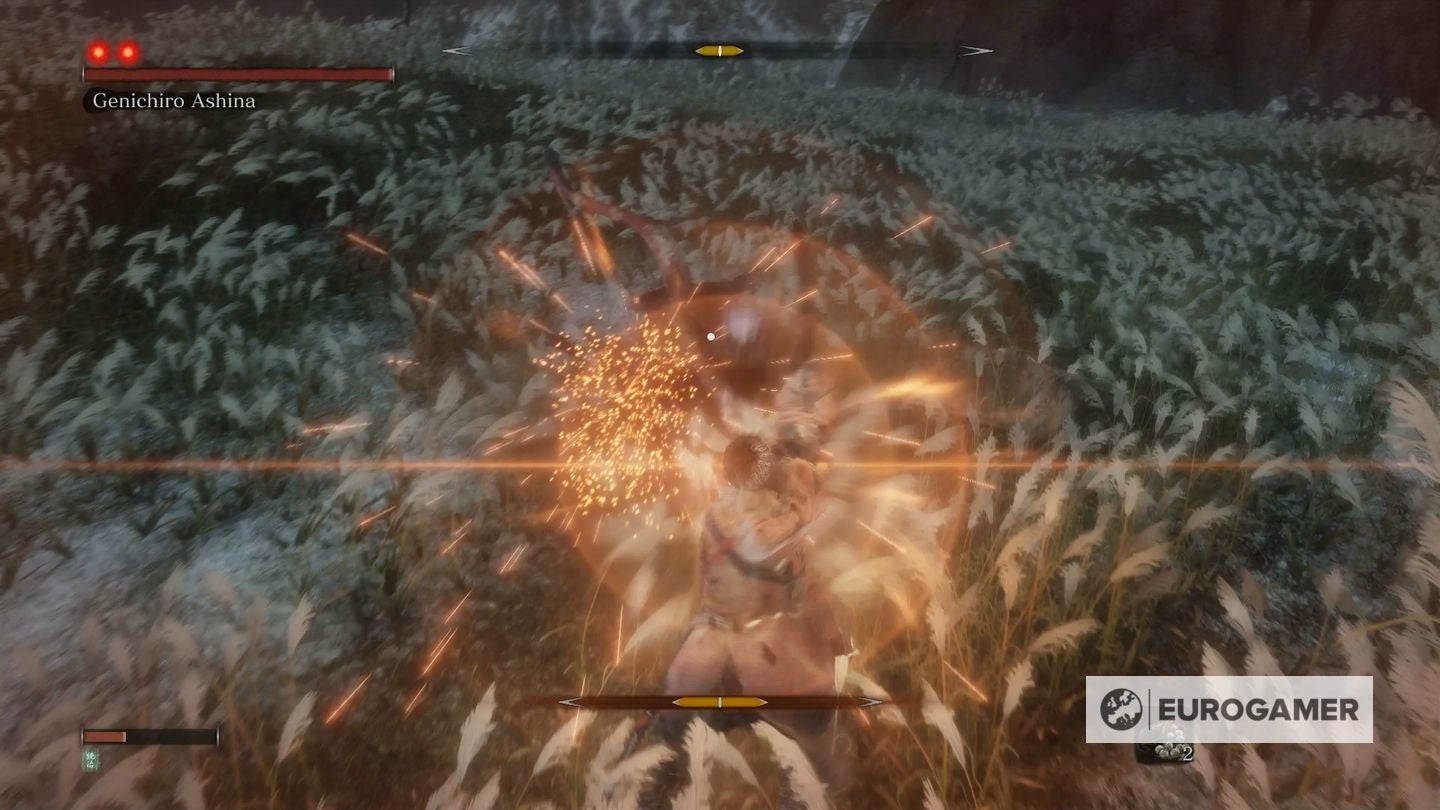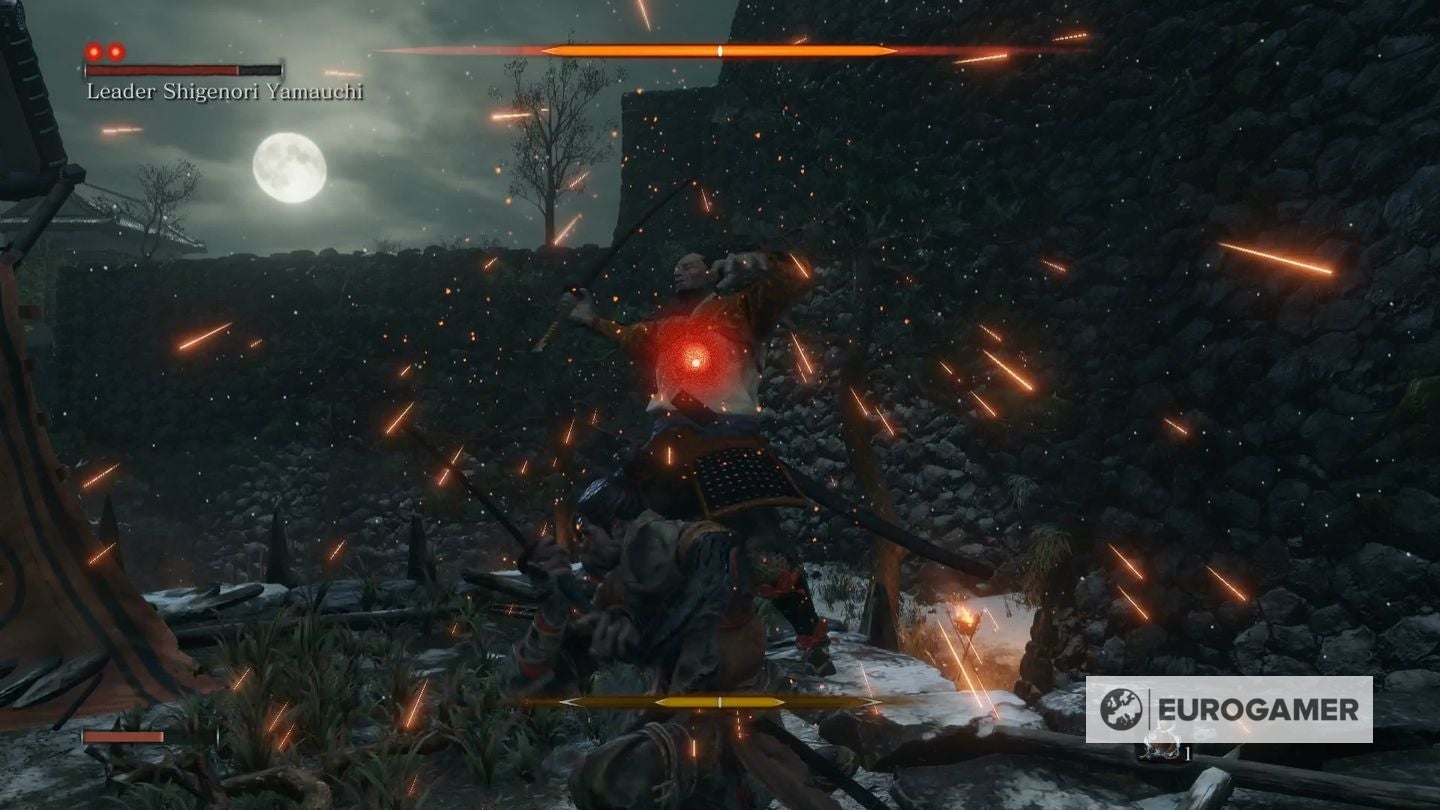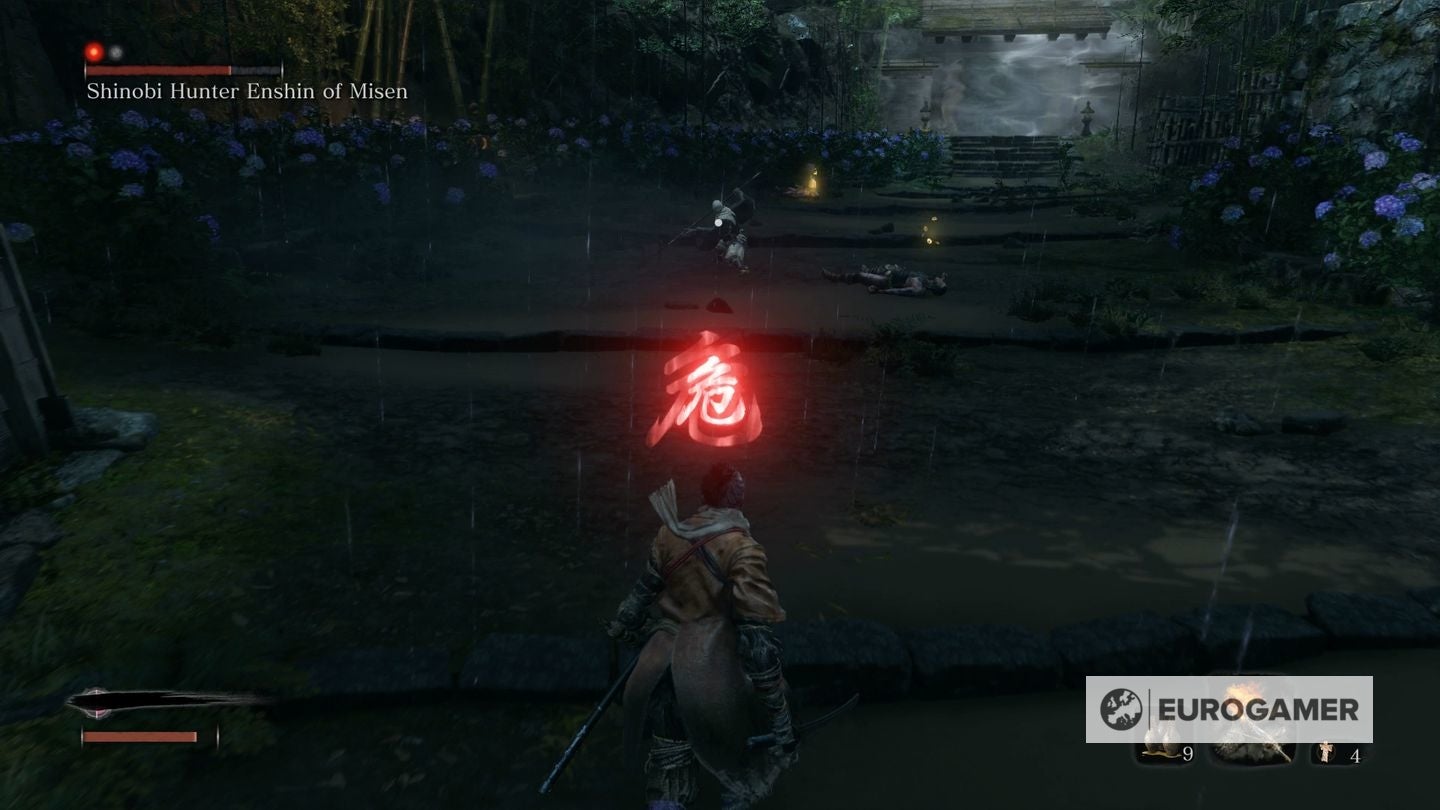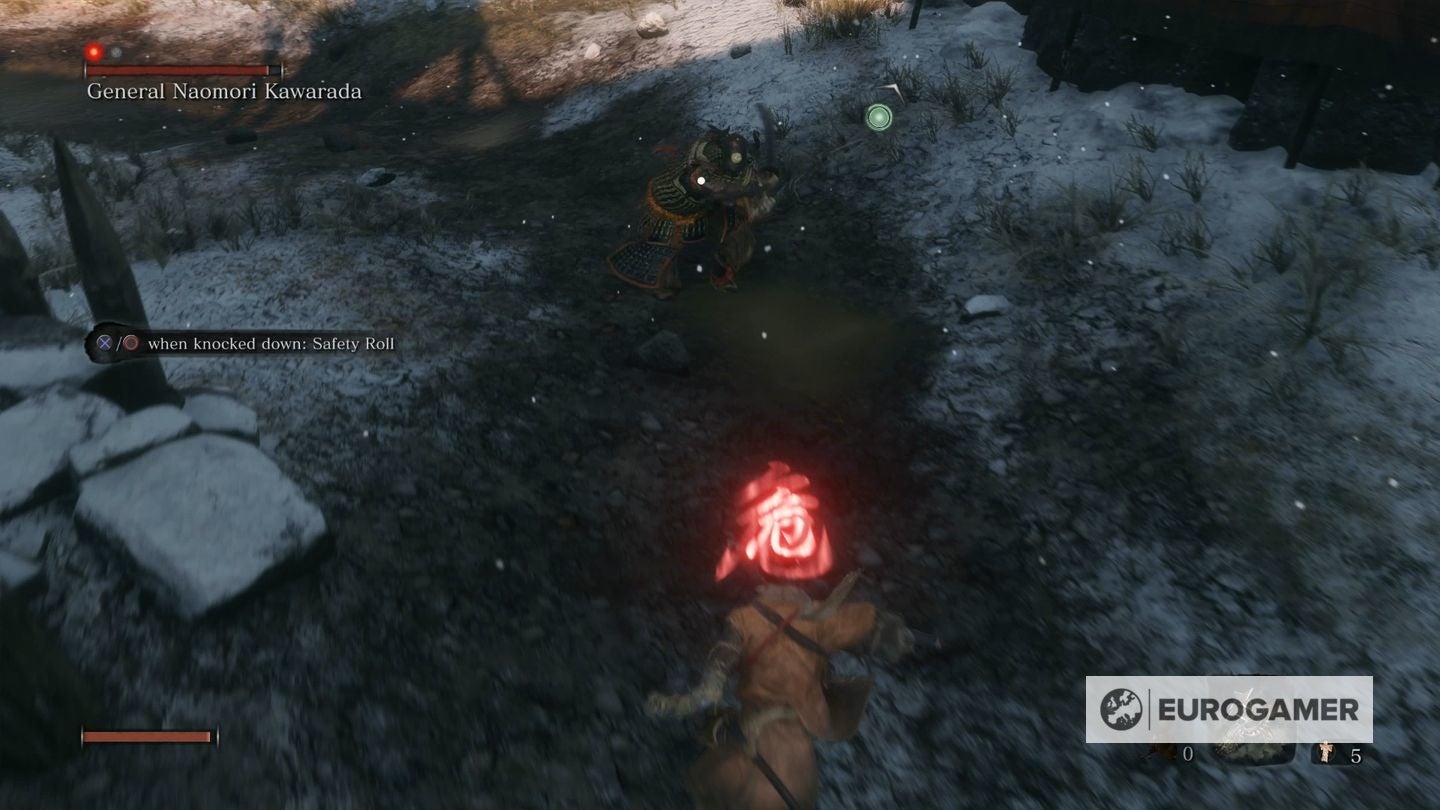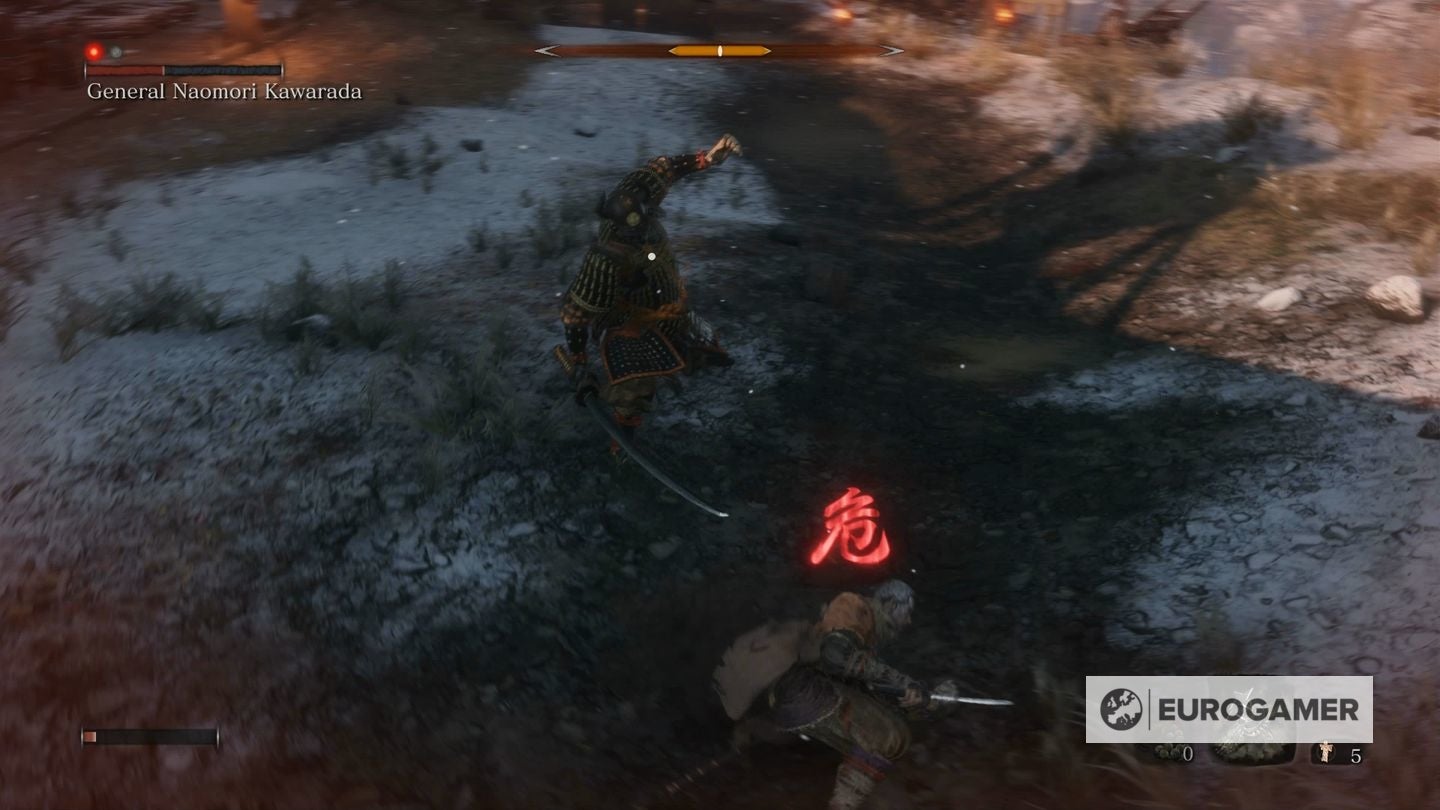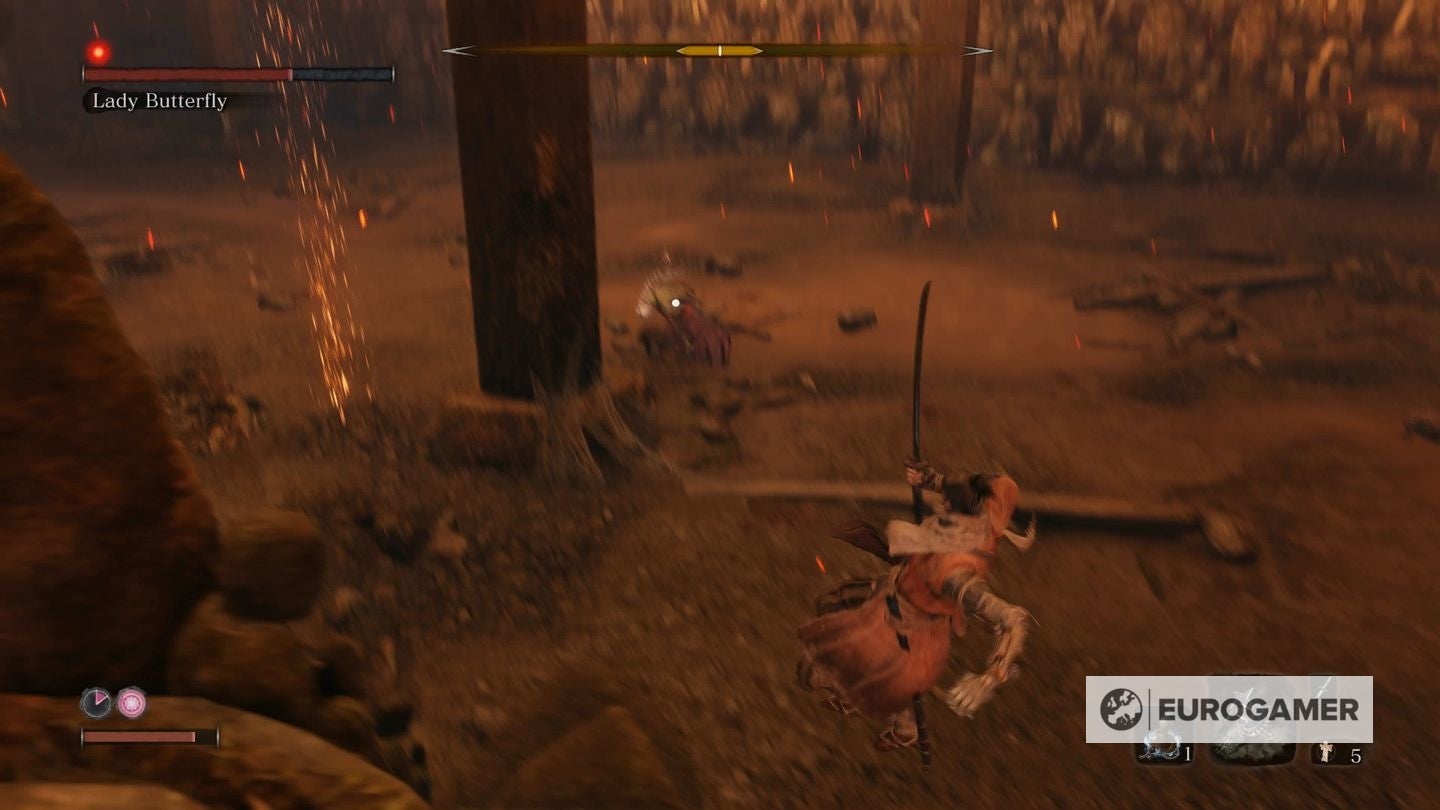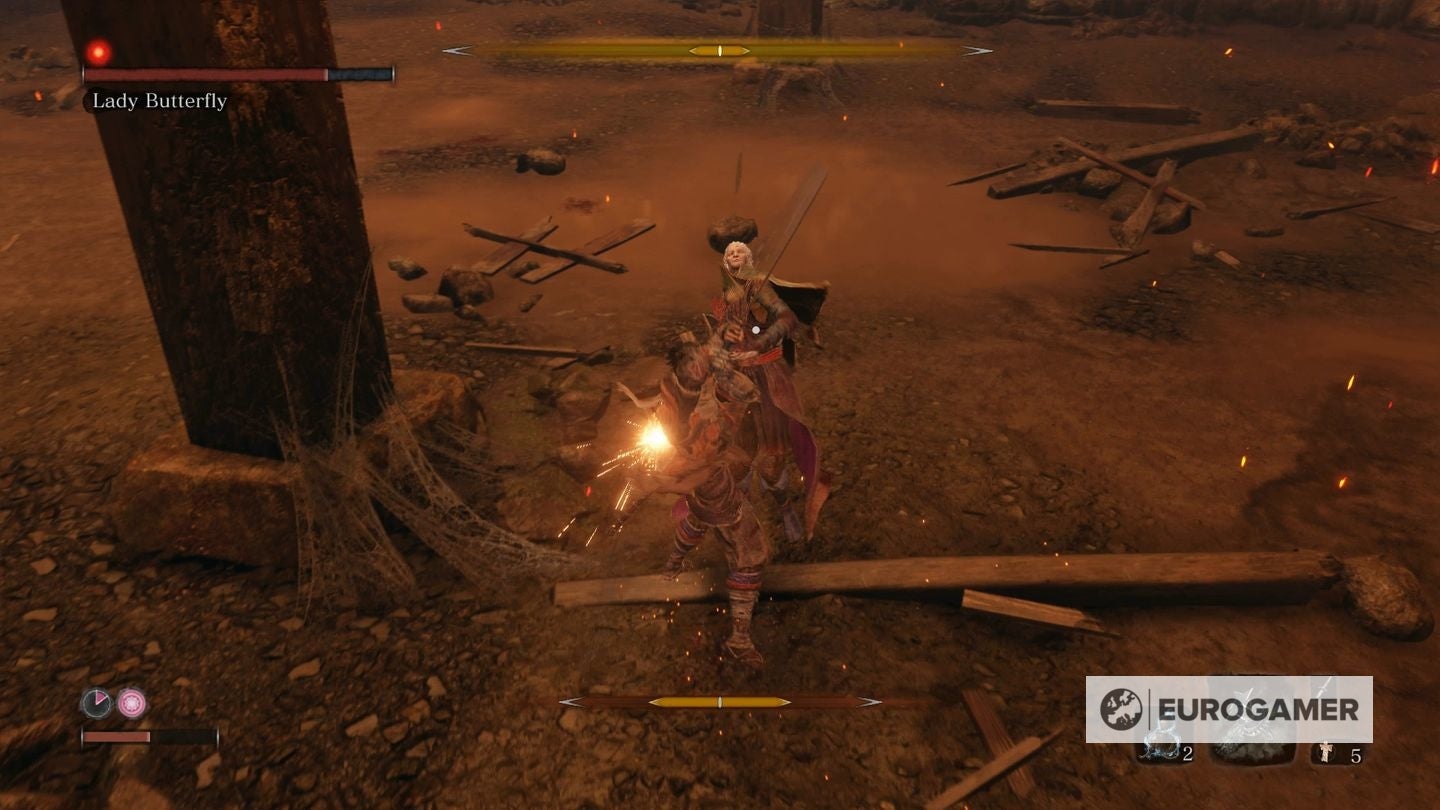Much of it is built around the idea of Perilous Attacks, but there are also intricacies to learning how to deflect and parry effectively, how posture works and how to land Deathblows effectively, too. On this page: Sekiro Combat system explained - the basics There are two bars to bear in mind for every character in Sekiro - and that includes both your own bars and the enemies’. The first is your Vitality, or health, which is pretty standard, and represented by the red bar. Have your reduced to zero by taking damage and you die; reduce the enemy’s to zero by dealing damage and they die (or rather, they become susceptible to an execution via Deathblow). The other bar is Posture, represented by the yellow gauge that fills up from the centre, which works in the opposite direction: if yours fills up, your defensive guard is broken and you’re stunned, unable to block. If the enemy’s is filled up, they become susceptible to a Deathblow, too. The two are also connected, however, and it’s only by managing both that you’ll have real success with Sekiro’s combat in the long run. Posture, parrying and dodging Posture and Vitality are linked: posture recovers at a set speed for each enemy you face, but the lower a character’s Vitality, the slower their Posture will recover down to zero. Some enemies’ Posture recovers really quickly - looking at you, Lady Butterfly - so quickly in fact that it’s almost impossible to fill up their Posture meter if they have full Vitality. In that case, you need to deal some Vitality damage to them - actual damage - to lower the recovery speed of their Posture. Then, you need to work on filling that Posture bar. Your own Posture works in the same way - on low health, your Posture will recover much slower. Try to keep your Vitality topped up if your Posture’s taking a hammering by using the regular healing items like the Gourd or Pellets. There’s also another thing to bear in mind too: Posture recovers much faster when guarding - blocking by holding L1/LB - so create some distance and hold block, even if you don’t feel you need to, to lower that meter a little faster. How to break enemies’ posture There are two ways to break enemy Posture (which both apply to your own Posture in the opposite situation, too). The first is to attack. Landing blows to deal actual damage, or hitting an enemy while they block, will both deal moderate Posture damage. The second, and more effective in terms of pure impact on Posture, is to successfully deflect enemy attacks. You do this by tapping the guard (block) button with L1/LB just as the enemy blow is right about to land. It’s hard to master, and intentionally risky. Successfully land several deflections in a row and you’ll do some serious Posture damage, but mistimed attempts will leave you very vulnerable - there’s a fraction of a second after a failed deflect (say you do it a bit early) where you can’t immediately deflect again, so mashing the button will only get you in more trouble. Remember that the tougher enemies - bosses in particular - will need some Vitality damage too, or their Posture will recover faster than you can wait for them to attack and successfully deflect, even if you deflect everything perfectly. That, combined with the fact that standard attacks - blocked or otherwise - deal some Posture damage too, is why Sekiro is about aggression as much as it’s about caution. Instead, countering Perilous Attacks is about playing a kind of rock-paper-scissors: responding to the right kind of Perilous Attack with the right kind of counter. Reading Sekiro’s Perilous Attack symbols, and how to counter the unblockable attacks The Perilous Attack symbol - a red Kanji symbol that appears when a Perilous Attack is about to be performed by an enemy - is the same for all three kinds of Perilous Attack, as far as we can tell. Countering them will come down to both knowing what the right counter is (as explained in a moment), and reading the enemy’s body language to know which kind is about to be performed. Here are the three kinds of Perilous Attack, and the appropriate counter. Thrust attacks - counter by deflecting the attack with a well-timed tap of L1/LB (remember you can’t block it by holding that button, only with a perfectly-timed deflection). A fantastic, and arguably easier alternative to this is the Mikiri Counter Skill (more on that in our Sekiro Best Skills and Skill Tree guide). Unlock it first, and then you perform it by pressing the dodge-roll button (Circle/B) and the left analog stick towards the enemy’s lunch. You’ll do massive Posture damage in the process. Sweep attacks - counter by jumping once to dodge it, and quickly pressing the jump button again, like you’r double-jumping up a wall. This will bob the enemy on the head with a nice little kick, that actually does some great Posture damage in the process. If you’re struggling with the double-jump, try not to move too much in the air, and don’t panic: a standard jump is enough to avoid the move, and often leave the enemy exposed. Grab attacks - counter by dodging to the side. These can’t be blocked, deflected, or jumped over (although you can often jump back and sideways out of range if you’re positioned well). Dodging will often leave the enemy exposed to a couple of free hits while they’re over-extended, but don’t get carried away, as they’ll quickly recover! Looking for more Sekiro pages like this? First up, the first main Sekiro patch notes for update 1.03 are live. Otherwise, our Sekiro boss guide, boss list and walkthrough hub has everything in one place, including pages on Lady Butterfly, Genichiro Ashina Way of Tomoe, Folding Screen Monkeys, Corrupted Monk, Guardian Ape, Great Shinobi Owl, Emma and Isshin Ashina, True Corrupted Monk, and Divine Dragon. We also have in-depth pages like Sekiro tips and tricks to get you started, Sekiro Skills, skill tree and Esoteric Text locations explained, our deep dive on the Sekiro combat system, Posture, and Perilous Attacks, or details on all Sekiro Prosthetic Tool locations, how to cure Dragonrot and Rot Essence in Sekiro, Gourd Seed locations, a Divine Confetti farm route method, all Treasure Carp Scale locations, all, Prayer Beads locations and all Snap Seed locations, too. And when you’re ready - the how to beat Isshin Sword Saint and an Isshin Sword Saint cheese, plus the many Sekiro endings. It’s complex, in a way, so we won’t go into massive detail, but in simple terms this is about how many frames - literally, of the usual 30 or 60 frames that the game produces per second - that a character is immune to damage, or exposed to damage due to ‘stun lock’. Certain moves in prior Soulsborne games gave you a few frames of immunity, specifically the dodge roll. Do it at the right time and you can’t take any damage (more or less); but then this was balanced out by things like a Stamina gauge that only let you perform so many rolls in quick succession. In Sekiro: Shadows Die Twice, there are no frames of immunity on the dodge roll. That’s balanced out somewhat by the fact that you can perform it as many times as you like, because there’s no Stamina gauge, but even still, any fighting game player worth their salt will tell you that makes one-on-one combat in games like Sekiro, which takes fairly heavy influence from fighting games, very hard indeed. There are “some” frames of immunity in performing a Deathblow, but this is only really relevant when fighting multiple enemies at once - if you’re performing a Deathblow on one enemy there’d be another one attacking you for the immunity to actually count - and in most cases you want to clear out any surrounding enemies before you fight a boss, anyway. It’s not one to be relied upon then, although we did notice it can get you out of trouble when the prompt does appear and you’re getting swarmed, as enemies will stop attacking until you’re done with the animation, buying you some time for a quick dodge or jump out of there. The other thing we mentioned is “stun lock”. In brief, this is when you or an enemy is staggered or stunned, even for just a moment, which gives you or them the advantage if you’re both trying to attack at once. A good example of this is in fighting Lady Butterfly: often, you can hit her with two attacks while she blocks, and if you go for a third she’ll parry or block it and put you in a brief stun lock - if she attacks then (and she often does), then you won’t be able to block or deflect it in time. Fighting the toughest enemies in standard one-on-one combat then is, at the highest level, about studying how many hits you can land, if any, before you get caught in stun lock and put at a disadvantage. Once you know that, you can land that number of attacks - say, two - to do a bit of Posture damage. Then respond to their attacks with well-timed deflections for more Posture damage. Then respond to their Perilous Attacks with the appropriate counter for even more Posture damage, chip away at them at any moments where their guard is down for some Vitality damage so their Posture doesn’t recover as fast, and repeat! Easy. Or not very easy at all, but it’s a strategy, at least. Focus on the rhythm of deflecting enemy attacks, not your reactions (tap, tap-tap, tap, tap - each enemy has a set few attack rhythms of their own that you can memorise with time) and you’ll have more luck, and the rest is just about doing the above - responding to the horribly wide range of enemy types and strategies with the right counter-strategy of your own. Good luck, Shinobi! You will probably need it.
